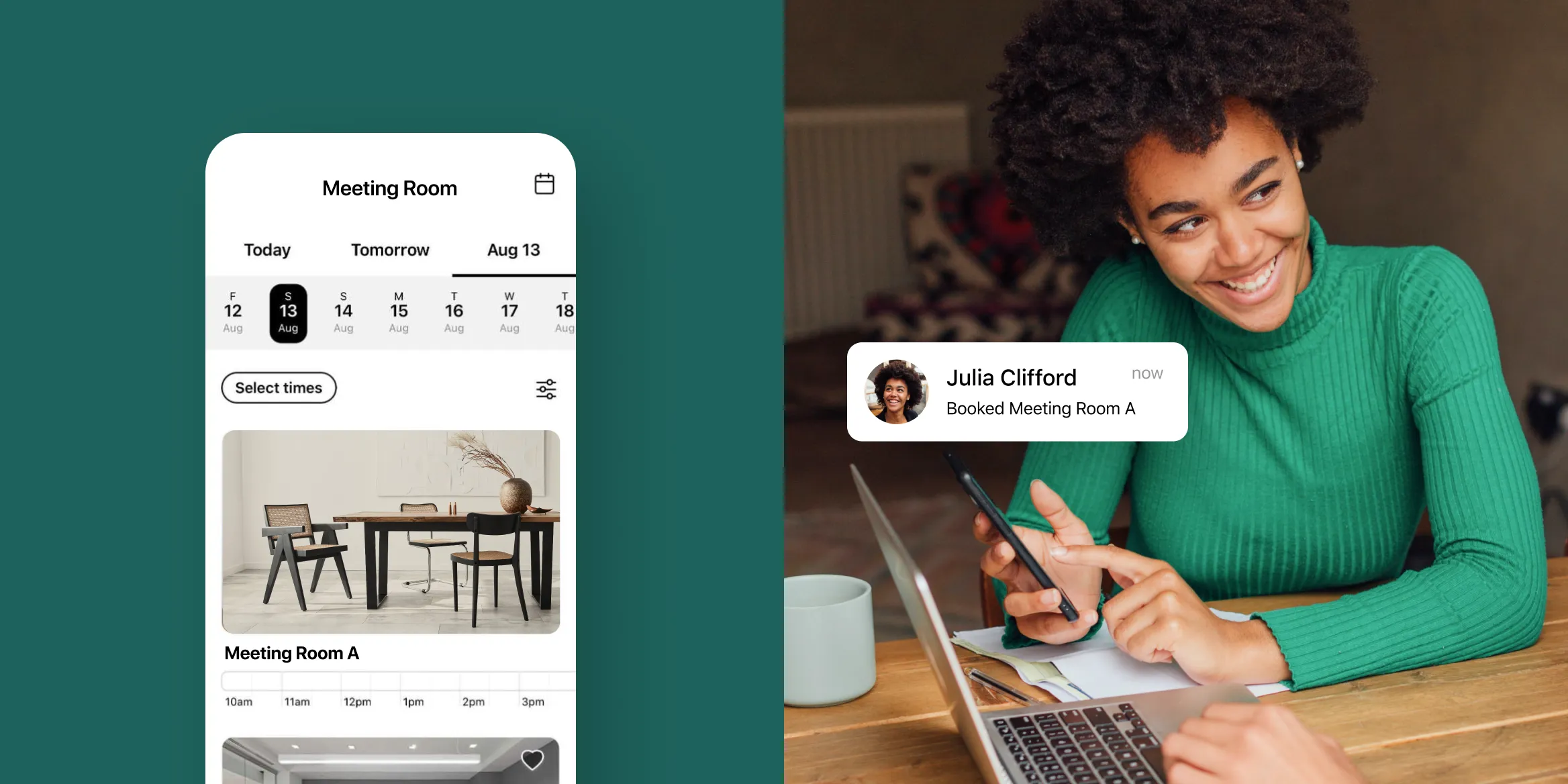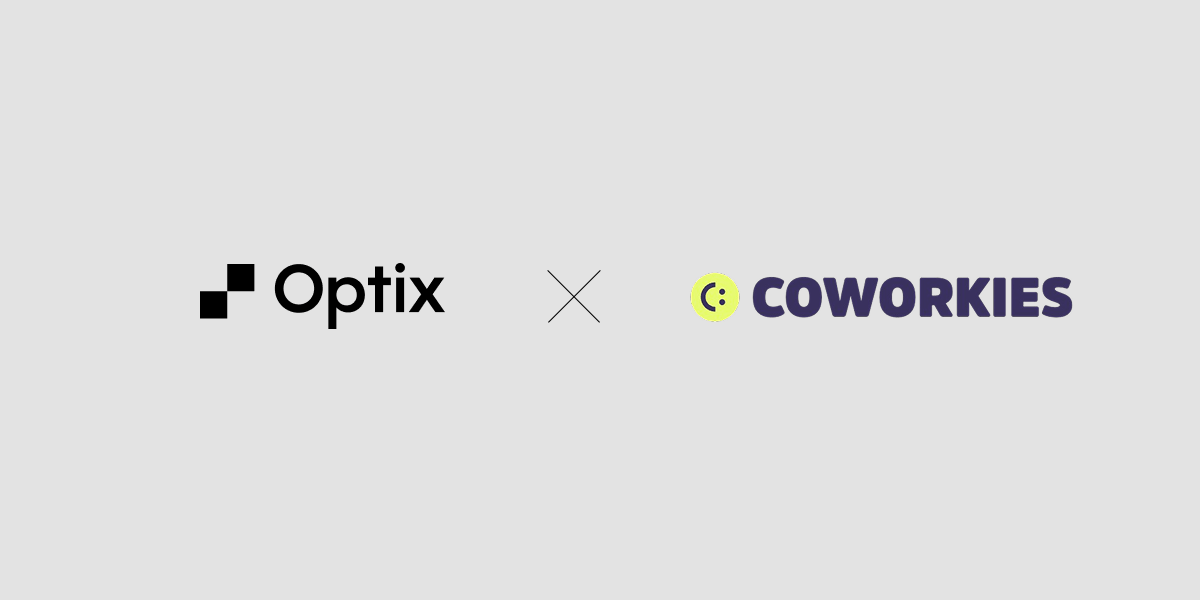
When it comes to starting a business, especially a coworking space, location matters…a lot.
The right location can make or break your entire business. Choosing the wrong location for your coworking business is one of the number one reasons why we see coworking spaces fail.
Getting started with a location strategy can be tough, especially if you’re unfamiliar with the market. In this article, we’ll share an actionable framework you can start using today to help you choose the location of your coworking business.
Automate your coworking space with Optix

1. Create your coworking location strategy
A coworking location strategy is a guide that helps you make decisions about where to open your coworking business.
Creating a strong location strategy will enable you to secure the best location for your new coworking space, one that meets your business goals and maximizes potential opportunities.
A location strategy might consist of:
- The city
- Type of building
- Price range
- Target demographic
Defining your location strategy is about setting yourself up for long-term success. A razor-sharp location strategy ensures you’re giving yourself the greatest chance of growing your coworking business. We recommend determining your location strategy as part of your coworking business plan.

2. Clearly define the ideal member you want to target with your coworking space
When in doubt, start with your customer. Ask yourself what kind of member you are targeting, and how this may influence where you choose to run your business. Don’t have your target member defined yet? Mapping out your ideal customer profile (ICP) should be your first step.
At this point, you’ll need to decide whether you will be focusing on:
New members that are new to coworking: Are you aiming to target a new set of prospective members? If so, you’ll need to define your target member and ensure your strategy prioritizes the locations that will appeal to that member type.
For example, if you’re targeting working parents, are the locations you’re considering close to residential areas and local schools/daycares?
New members from competing coworking spaces: Are you confident that your services are above and beyond what your competitors are offering? If so, you’ll need to understand where the hot-spots are for coworkers and what your key differentiators will be when going up against your competitors.

3. Lock down your city of choice
Once your strategy is in place and you know who you want to target, it’s time to lock down your city of choice. You’ll get the best results by blending both qualitative and quantitative factors when evaluating a new geography to launch your space.
For example, one of our clients created an impressive process to help them decide where to open their next coworking location before landing on a space. Here’s a step-by-step breakdown of what they did.
1. Create a list of possible cities
They started by simply writing down a list of cities they knew and liked. They then searched online for lists of the top cities in the country for:
- Millennial growth
- Job growth
- Vibrant communities
- Other factors they felt were relevant
This brought them to 24 cities, ranging from the likes of Chicago to Spokane.
2. Research each city thoroughly
The next step was to research each city based on the data that was most important to the success of their business. They collected a vast amount of data on:
- Demographics
- Competition
- City planning
- Small business statistics
- The local real estate market
- Various social amenities offered in each location
This helped narrow the list from 24 down to ten cities.
3. Collect qualitative data to shortlist cities to visit
The final stages of their analysis included making cold calls and eventually visiting four of the finalist cities, in person. Here, they shifted from quantitative towards a more qualitative approach relying on information collected from those they spoke to to come up with the city that would be best for them.
Their interactions with real estate agents, government officials, coworking space owners, and other locals played a crucial role in helping them arrive at their final decision of Columbus, Ohio.

4. Get to know your potential neighborhoods
You’ve landed on a city and a target member. Now, you need to get to know the neighborhoods. It’s time to put your boots on the ground and visit local store owners and consumers.
You’ll want to:
- Talk to the locals and get their perspective on the community
- Get a real feel for the area – what is the energy like?
- Gain a strong understanding of the most celebrated aspects of the community
- Understand the needs and areas for development
- Ask good questions and listen – if you need a primer on how to do customer research, read the classic: Talking to Humans
Chatting to locals will also help you establish how strong the competition is, which will be very important if you’re coming into a crowded space. It will help you understand how you can successfully differentiate your brand and services from what else is offered.
If you want to acquire new members who are not currently coworking, talk to local retailers and prospective clients to understand if people are even interested in coworking. Perhaps the coffee shop in the neighborhood is always flooded with laptop goers and they’re looking for a new home.
This is also a great time to start planting seeds for potential partnership opportunities – the most successful coworking brands offer valuable member perk programs with the best brands in their city.
Launching a new coworking space is a big undertaking.
A well-thought-out location strategy is a great way to make the process more manageable.
It’s important that your location showcases everything that’s special about who you are and what you offer.
Highlight all of those unique little touches that will keep bringing your members back while reflecting the vibe of the neighbourhood it’s in.
Want to grow your membership before you open? Connect with a member of our team today!
Marketing Manager
Kelly Karn is the Marketing Manager at Optix coworking software. She's been covering the latest and greatest in the world of coworking for 4 years and is one of the leading voices in coworking content having written over 300 articles. You can find her work on Coworking Insights, Coworking Resources, Allwork.space, DeskMag, GCUC, and (of course) the Optix blog.
Frequently asked questions
Seasonality can influence demand for coworking spaces, especially in cities with tourism or academic cycles. When choosing a coworking location, consider whether your target neighborhood sees population shifts during summer, holidays, or the school year, as this may affect occupancy rates and marketing strategies.
Access to reliable public transportation is a major factor for attracting members to a coworking space. A flex space near bus routes, subways, or train stations is more appealing to professionals who don’t want to rely on cars, making your coworking business more accessible to a wider audience.
Suburban or smaller city locations are becoming more attractive for coworking spaces as remote work grows. If your ideal members are professionals seeking shorter commutes and more affordable options, a flex space outside of major downtown cores could be a strategic advantage.
Beyond rent, coworking location costs can include zoning compliance, parking agreements, signage permits, and neighborhood association fees. Factoring these into your coworking space strategy will help you avoid surprises and protect profitability.
Coworking management software like Optix can help operators test different pricing models, track member demand across multiple locations, and automate day-to-day operations. This allows you to confidently expand into new neighborhoods while keeping overhead manageable.



